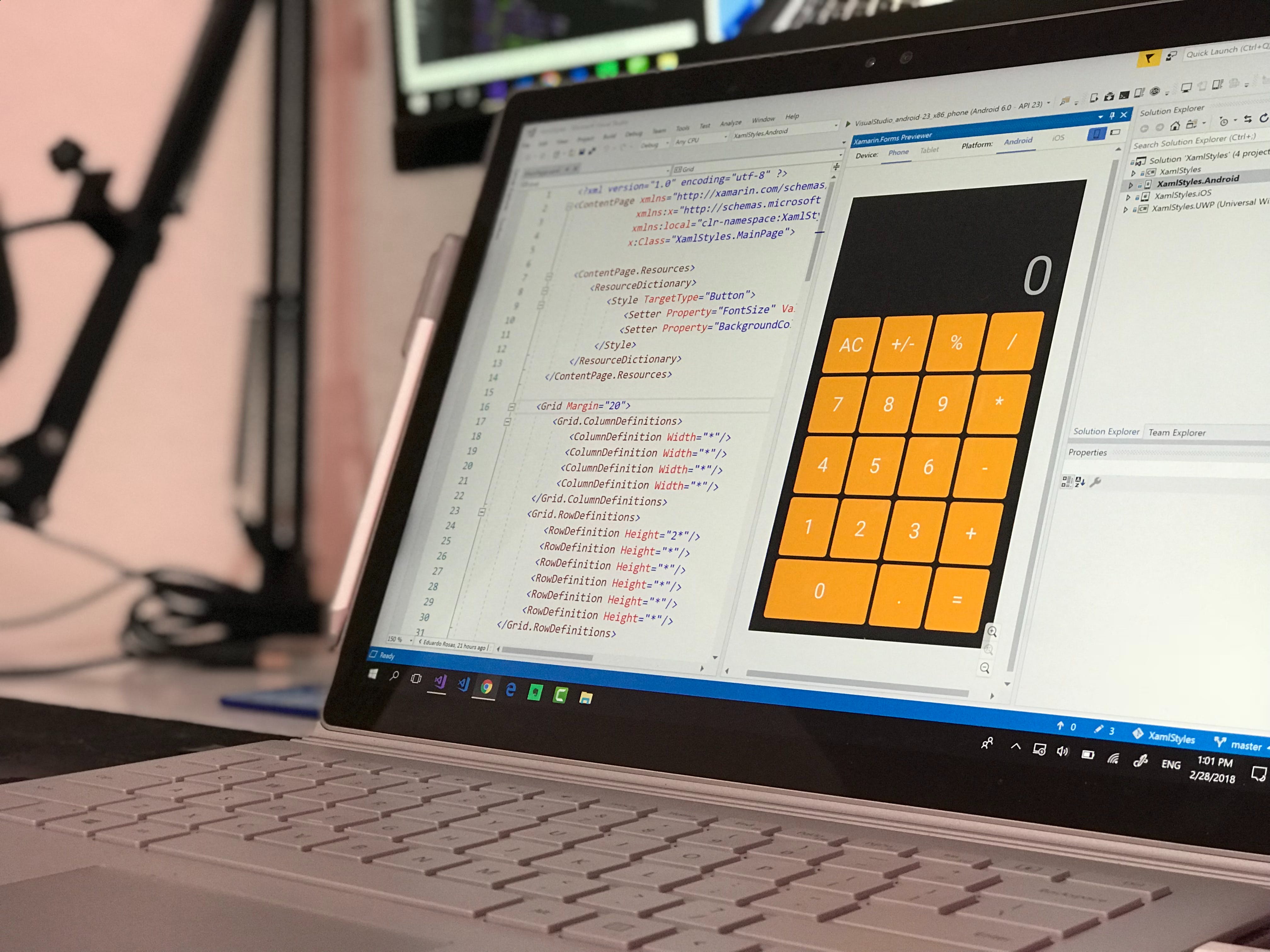Ultimate Guide for IoT App Development Framework Selection!

Significance of Choosing the Correct IoT Framework

Key Factors in IoT Framework Selection
.jpg)
Comparing Popular IoT App Development Frameworks

Best Practices for Implementing IoT Frameworks

This post explores the Dot Net framework and provides detailed information about its offerings & benefits.


.jpg)



Understanding the financial implications is crucial when embarking on the journey of app development, especially in a technologically advanced marketplace like Singapore. The cost of creating a mobile application can vary significantly based on numerous factors such as the app’s complexity, design specifics, developer expertise, and the time frame for development. In Singapore’s competitive tech industry, how much does it cost to develop an app is a question that hinges on these detailed considerations.
For businesses looking to enter the vibrant digital space of Singapore, a well-crafted app can be a game-changer. At Biz4Solutions, we understand the intricacies involved in transforming your innovative ideas into successful digital solutions. Our team is committed to providing transparent and scalable app development services that align with your budget constraints and business goals.
Join us as we delve into the realms of app development costs in Singapore, offering insights to help you budget effectively for your mobile project. Whether you are a start-up or an established enterprise, our comprehensive guide will illuminate the path to achieving your software aspirations without compromising on quality or user experience.
The cost of app development in Singapore is not a one-size-fits-all figure; it is influenced by a variety of key factors that can significantly impact the overall pricing. One of the primary determinants is the complexity of the app, which includes the number of features, the level of customization, and the integration with other systems or third-party services. An app with basic functionality will naturally be less expensive than one with advanced features such as augmented reality or artificial intelligence.
Another crucial factor is the platform choice, whether the app is being developed for iOS, Android, or both. Developing a cross-platform app can increase the development time and cost, but it also broadens the potential user base. The design elements also play a significant role; a user-friendly interface and an engaging user experience design require skilled designers and can raise the cost.
Moreover, the development team’s expertise and location can influence the price. Singapore boasts a highly skilled workforce, but the talent comes at a premium. The cost can also escalate if the development process requires specialized knowledge or niche skills. Finally, the project timeline affects the cost; a faster turnaround time may necessitate additional resources and thus, a higher budget.
It is essential for businesses to consider these factors and their implications on the development cost to ensure a balanced approach between quality, functionality, and budgeting for their mobile app projects.

Estimating the budget for app development in Singapore requires a comprehensive understanding of the project’s scope and the associated costs. To start, businesses must outline their app’s functional requirements and determine the necessary features that align with their strategic goals. This includes identifying the core functionalities, user experience details, and backend requirements that the app demands.
Another critical step is to research and compare the market rates for app development services in Singapore. These rates can vary widely based on the technical expertise and reputation of the development agency. Additionally, consider the maintenance and operational costs post-launch, such as updates, hosting, and customer support, which are often overlooked in initial budget planning.
Businesses should also account for the potential costs associated with testing and quality assurance. Rigorous testing is essential to ensure that the app is reliable, secure, and provides a seamless user experience across all devices and platforms. Finally, setting aside a portion of the budget for marketing and promotion is crucial to ensure that the app reaches its target audience effectively.
By carefully evaluating these aspects and consulting with experienced app developers, businesses can create a realistic budget that reflects the true cost of bringing a high-quality mobile app to market in Singapore.

When considering how much it costs to develop an app in Singapore, choosing between hiring a freelancer or engaging an agency is a pivotal decision that can significantly impact your overall expenditure. Freelancers may offer more attractive rates due to lower overhead costs and the flexibility of choosing projects that align with their skills. However, the expertise of a freelancer is typically narrower than that of an agency, which can result in additional costs if multiple freelancers are needed to cover different aspects of app development.
On the other hand, agencies provide a more comprehensive package. They offer a team of experts ranging from project managers and designers to developers and QA specialists. This can streamline the development process and ensure a more cohesive final product. The cost of hiring an agency is generally higher, reflecting the broader range of services, higher levels of accountability, and often swifter turnaround times. Yet, the investment in an agency can also mean a more reliable timeline and a higher quality product.
It’s important to weigh these options against the project’s complexity, timeline, and specific skill requirements. A simple app with minimal features might be well-suited for a freelancer, while an intricate project with multifaceted requirements might necessitate an agency’s resources. Businesses should also consider the value of ongoing support post-development, which agencies typically offer as part of their comprehensive service packages.
Comparing the pros and cons, businesses must assess their project needs and decide whether the cost savings from a freelancer justify the potential risks and coordination efforts, or if the higher investment in an agency guarantees the quality and support they require for their app to succeed.

The complexity of an app is a major determinant in answering the pressing question: how much does it cost to develop an app in Singapore? Simple applications with a basic user interface and minimal features can be developed relatively quickly and at a lower cost. In contrast, complex applications that require advanced functionalities, such as third-party integrations, custom animations, sophisticated databases, or the use of emerging technologies like augmented reality, will drive up development costs considerably.
The number of platforms an app is being developed for also plays a significant role in its complexity. A cross-platform app that operates seamlessly across different operating systems will require additional time and expertise, compared to a single-platform application. Furthermore, backend development needs can escalate costs; an app that relies on server-side processing and storage will be more expensive than one with limited or no backend requirements.
User experience (UX) and user interface (UI) design are other critical components influenced by complexity. An app that aims to deliver a highly intuitive and engaging user experience with custom-designed elements and transitions will necessitate a more substantial investment in design expertise.
Ultimately, complexity affects not only the initial development costs but also the long-term maintenance and scalability of the app. As the complexity increases, so does the need for rigorous testing, quality assurance, and future updates to ensure the app remains functional and competitive. Therefore, businesses must carefully consider the desired features and functionalities of their app and how they align with their objectives and budget constraints.

To ensure that every dollar spent on app development yields a fruitful return, a strategic approach is necessary. When considering how much does it cost to develop an app in Singapore, businesses must align their app’s purpose with their investment. Identifying the core functionalities that provide the most value to users can prevent overinvestment in unnecessary features. Moreover, opting for an iterative development process allows for the launch of a minimum viable product (MVP) and subsequent updates based on user feedback, ensuring that the app evolves in response to actual user needs and preferences.
Choosing the right development partner is also crucial. A partner like Biz4Solutions, with its expertise in providing high-quality and cost-effective software services, can guide businesses through the complexities of app development. By leveraging their experience, businesses can avoid common pitfalls and make informed decisions that optimize their investment.
Staying informed about the latest trends and technologies in the mobile app industry is imperative. This knowledge can aid in future-proofing the app by integrating scalable technologies that can adapt to changing market demands. Additionally, setting aside a portion of the budget for marketing and user acquisition strategies is essential, as it helps in ensuring that the app reaches its target audience and generates a return on investment.
By taking these steps, businesses can maximize the value of their app development project, making it a profitable venture in the competitive Singaporean market. If you’re ready to embark on your app development journey and want to ensure your investment is in capable hands, consider partnering with Biz4Solutions, where our commitment is to turn innovative ideas into reality with thoughtful planning and meticulous execution.